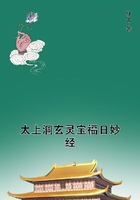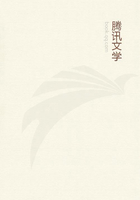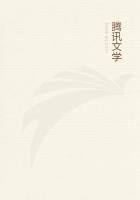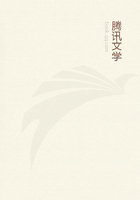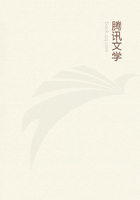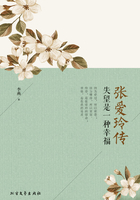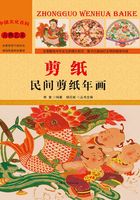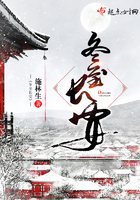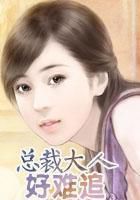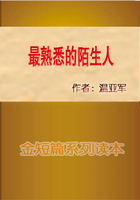[In the summer of 1860 he was staying at the house of his sister-in-law, Miss Wedgwood, in Ashdown Forest, whence he wrote (July 29, 1860), to Sir Joseph Hooker;--"Latterly I have done nothing here; but at first I amused myself with a few observations on the insect-catching power of Drosera; and I must consult you some time whether my 'twaddle' is worth communicating to the Linnean Society."In August he wrote to the same friend:--"I will gratefully send my notes on Drosera when copied by my copier: the subject amused me when I had nothing to do."He has described in the 'Autobiography' (volume i.), the general nature of these early experiments. He noticed insects sticking to the leaves, and finding that flies, etc., placed on the adhesive glands were held fast and embraced, he suspected that the leaves were adapted to supply nitrogenous food to the plant. He therefore tried the effect on the leaves of various nitrogenous fluids--with results which, as far as they went, verified his surmise. In September, 1860, he wrote to Dr. Gray:--"I have been infinitely amused by working at Drosera: the movements are really curious; and the manner in which the leaves detect certain nitrogenous compounds is marvellous. You will laugh; but it is, at present, my full belief (after endless experiments) that they detect (and move in consequence of) the 1/2880 part of a single grain of nitrate of ammonia; but the muriate and sulphate of ammonia bother their chemical skill, and they cannot make anything of the nitrogen in these salts! Ibegan this work on Drosera in relation to GRADATION as throwing light on Dionaea."Later in the autumn he was again obliged to leave home for Eastbourne, where he continued his work on Drosera. The work was so new to him that he found himself in difficulties in the preparation of solutions, and became puzzled over fluid and solid ounces, etc. etc. To a friend, the late Mr. E. Cresy, who came to his help in the matter of weights and measures, he wrote giving an account of the experiments. The extract (November 2, 1860)which follows illustrates the almost superstitious precautions he often applied to his researches:--"Generally I have scrutinised every gland and hair on the leaf before experimenting; but it occurred to me that I might in some way affect the leaf; though this is almost impossible, as I scrutinised with equal care those that I put into distilled water (the same water being used for dissolving the carbonate of ammonia). I then cut off four leaves (not touching them with my fingers), and put them in plain water, and four other leaves into the weak solution, and after leaving them for an hour and a half, I examined every hair on all eight leaves; no change on the four in water; every gland and hair affected in those in ammonia.
"I had measured the quantity of weak solution, and I counted the glands which had absorbed the ammonia, and were plainly affected; the result convinced me that each gland could not have absorbed more than 1/64000 or 1/65000 of a grain. I have tried numbers of other experiments all pointing to the same result. Some experiments lead me to believe that very sensitive leaves are acted on by much smaller doses. Reflect how little ammonia a plant can get growing on poor soil--yet it is nourished. The really surprising part seems to me that the effect should be visible, and not under very high power; for after trying a high power, I thought it would be safer not to consider any effect which was not plainly visible under a two-thirds object glass and middle eye-piece. The effect which the carbonate of ammonia produces is the segregation of the homogeneous fluid in the cells into a cloud of granules and colourless fluid; and subsequently the granules coalesce into larger masses, and for hours have the oddest movements--coalescing, dividing, coalescing ad infinitum. I do not know whether you will care for these ill-written details; but, as you asked, I am sure I am bound to comply, after all the very kind and great trouble which you have taken."On his return home he wrote to Sir J.D. Hooker (November 21, 1860):--"I have been working like a madman at Drosera. Here is a fact for you which is certain as you stand where you are, though you won't believe it, that a bit of hair 1/78000 of one grain in weight placed on gland, will cause ONE of the gland-bearing hairs of Drosera to curve inwards, and will alter the condition of the contents of every cell in the foot-stalk of the gland."And a few days later to Lyell:--"I will and must finish my Drosera MS., which will take me a week, for, at the present moment, I care more about Drosera than the origin of all the species in the world. But I will not publish on Drosera till next year, for I am frightened and astounded at my results. I declare it is a certain fact, that one organ is so sensitive to touch, that a weight seventy-eight times less than that, viz., 1/1000 of a grain, which will move the best chemical balance, suffices to cause a conspicuous movement. Is it not curious that a plant should be far more sensitive to the touch than any nerve in the human body? Yet I am perfectly sure that this is true. When I am on my hobby-horse, I never can resist telling my friends how well my hobby goes, so you must forgive the rider."The work was continued, as a holiday task, at Bournemouth, where he stayed during the autumn of 1862. The discussion in the following letter on "nervous matter" in Drosera is of interest in relation to recent researches on the continuity of protoplasm from cell to cell:]
CHARLES DARWIN TO J.D. HOOKER.
Cliff Cottage, Bournemouth.
September 26 [1862].
My dear Hooker, Do not read this till you have leisure. If that blessed moment ever comes, I should be very glad to have your opinion on the subject of this letter.

